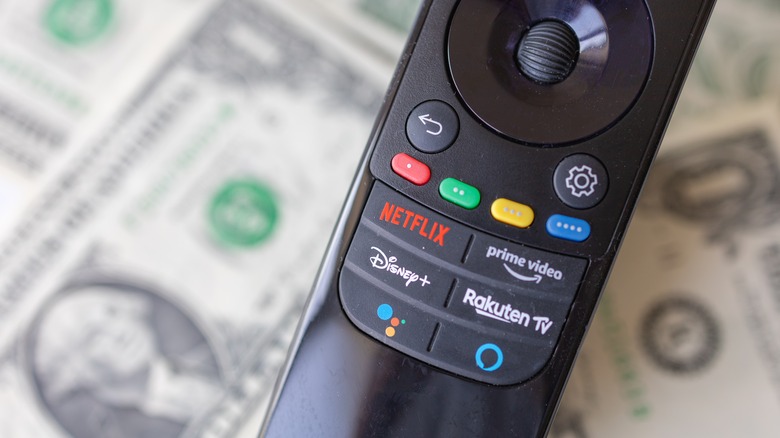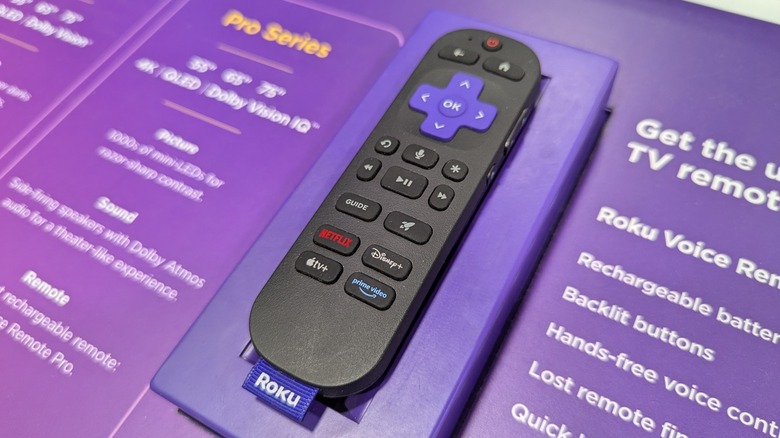How Do TV Companies Decide Which Streaming Service Gets A Button On Your Remote?
Television has come a long way since the days when your grandparents spent their evenings arguing over who had the remote. From the introduction of smart TVs to the advent of streaming services, modern home viewing experiences — and the remotes that direct them — are almost unrecognizable from their origins. First introduced in the 1950s, TV remote controls have defined the public's viewing habits since the channel surfing era, growing into a cultural touchstone now used by sociologists to study family and social dynamics.
Nowadays, remotes contain more advertisements than a European soccer jersey, sporting colored buttons that take you directly to subscription streaming services. These portable advertisements are designed to influence your viewing behavior as much as they are to provide convenience, and come with a heavy price tag for streamers and viewers alike.
Which streamers television providers place on their remotes is no accident, as selling remote space has evolved into a lucrative revenue stream. Like paying for the name of a football stadium, companies have begun to treat their physical products as avenues for increased advertising space. Television companies have grasped the opportunity with both hands, while content providers continue to look for ingenious ways to influence how you consume media. However, not everyone is happy with this arrangement, with several raising concerns about how it unduly influences viewer habits, offering a distinct advantage to major corporations or smaller competitors while diverting consumers away from small, local, and free streaming platforms.
Remote control buttons are big business
Offering remote control space is a lucrative business model for manufacturers. Streaming platform Roku, for instance, reportedly charged the likes of Hulu, Netflix, Showtime, and YouTube $1 each per remote in 2019. If such rates held through to its 90 million customer base in 2025, this $4-per-remote model would have generated a whopping $360 million. This is, of course, only a portion of Roku's advertising revenue, with nearly every space on its home screen serving as a source of income for the platform. Whether the model is a sustainable business plan, however, has also been hotly debated, as Roku's 2022 revenue decline, sparked by a lack of remote sales, jeopardized the industry's faith in the model.
Some are less enthusiastic about the commodification of TV remotes. Researchers at Australia's RMIT University, for example, published a 2023 review of the practice in the Australian smart TV market, finding that it gave strong preferential treatment to Netflix, Prime Video, Disney+, and YouTube. According to the researchers, this comes at the price of small and local services. The EU and the U.K. have launched investigations into the smart TV market, uncovering that anti-competitive advantages were often given to large content providers.
Legislators have sought to level the playing field by proposing "must-carry" provisions mandating that remote manufacturers give equal or preferential treatment to small and local content providers. Similarly, others have pushed for "Free TV" buttons that offer users access to no-cost TV programming. Some providers, such as Google TV, now include a "Free TV" button that takes users directly to a catalogue of over 150 free television channels.

